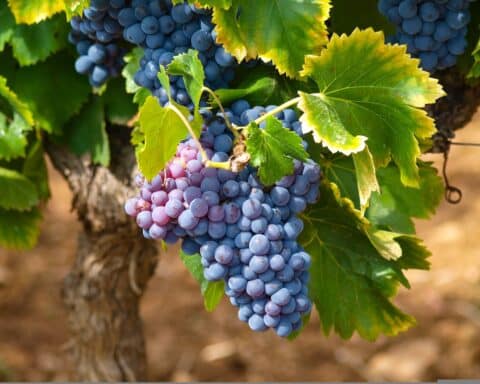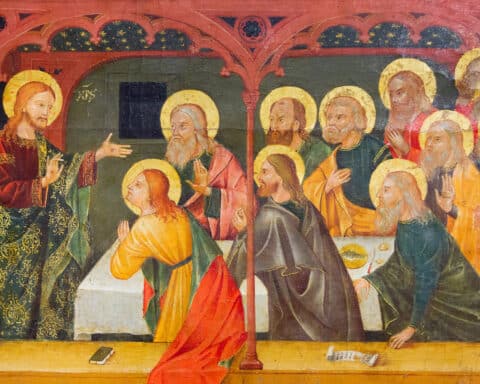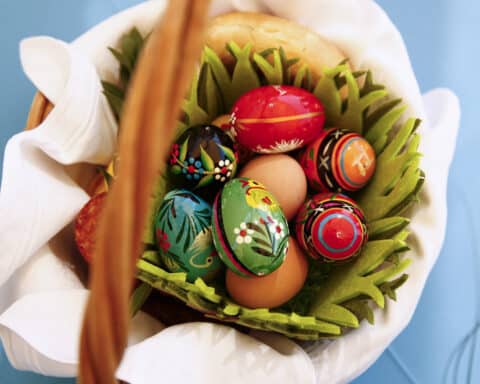
The Easter Vigil, too, feels like a joyful dance, a procession through Scripture, from the Creation to the Resurrection, until our hearts burst forth in ululation: Alleluia!
As we walk along the scriptural path of salvation during this holy liturgy, we hear of God’s most marvelous works, from the story of creation to the amazement of the disciple before Christ’s empty tomb. “Let there be light” … “and [they] were amazed!” (Gn 1:2, Lk 24:12). As we move in the creative light that is transforming us even as we listen to the word read to us during the vigil, we respond with mounting joy. Here are our eight responses from the psalms:
-
- “The earth is full of the goodness of the Lord.”
- “You are my inheritance, O Lord.”
- “Let us sing to the Lord; he has covered himself in glory.”
- “I will praise you, Lord, for you have rescued me.”
- “[We] will draw water joyfully from the springs of salvation.”
- “Lord, you have the words of everlasting life.”
- “Create a clean heart in me, O God.”
- “Alleluia, alleluia, alleluia!”
Yes, our responses crescendo to an Alleluia. From a recognition of the goodness of creation itself to the particular good of our own “rescue,” we praise God, awash in the words of life and the waters of salvation that cleanse the heart. Joyfully, we draw water; joyfully, we are cleansed.
| April 17 – Easter Sunday The Resurrection of the Lord |
|---|
|
Acts 10:34, 37-43 |
And if we are going to think of a crescendo of praise or a bursting forth of joyful noise, we would do well to remember the silence of Holy Saturday. It now sits in stark contrast to the joyful noise of Easter. The Resurrection is a mystery. Scripture does not tell us what happened in that rock-hewn tomb. It is silent; God is silent. Holy Saturday is a day of silence.
And yet, despite this silence, we will have some clues as to what the mystery of the Resurrection entails: Each Gospel presents the glorified and risen Lord with his wounds. These wounds offer the disciples a way to recognize Christ, who, now glorified, is not immediately recognizable to them. Christ’s wounds are an important detail within the Gospels. Indeed, these wounds are hardly a detail, but the announcement of forgiveness and of love. It was by these wounds that Christ conquered death so as to give us life. Those wounds, then, are the proof of this life-giving love.
But, friends, there is more. The Resurrection reveals to us that this life-giving love is a real force within the world today. This love is not an abstract thought or a quaint theological concept. It has conquered death! God’s love is an active force — creating, redeeming and sanctifying all those who respond to God’s word with praise and thanksgiving.
And so we burst out in song; in ululation: “Alle-le-le-le-le-le-le-le-le-lu-ia!”
Catherine Cavadini, Ph.D., is the assistant chair of the Department of Theology and director of the master’s in theology program at the University of Notre Dame.





